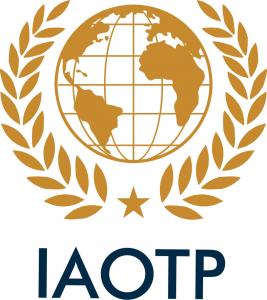Oct. 19, 2023
A panel of experts, led by Jon Damush of Iris Automatons, Inc., looked to navigate “sticky” issues related to advanced air mobility (AAM) implementation in the National Airspace System following a year of significant regulatory work, including a notice of proposed rulemaking (NPRM) for powered-lift airman certification and operations, and policy work related to UAS.
The discussion took place during an education session at the 2023 NBAA Business Aviation Convention & Exhibition (NBAA-BACE).
UAS operations currently rely on waivers and exemptions since the existing regulatory framework doesn’t entirely fit. Charlton Evans, of End State Solutions, said waivers are usually airspace related and time-limited, typically to two years. Waiverable rules are listed in Part 91 and exemptions are typically related to operational rules.
Jeffrey Vincent, from the FAA’s UAS Integration Office, talked about expectations for the upcoming Part 108 NPRM, which will address beyond visual line of sight UAS operations. Part 108 would ideally create regulations that reduce the need for exemptions for BVLOS operations. An Aviation Rulemaking Committee (ARC) recently submitted its recommendations to the FAA on the topic.
“We doubt you will see implementation of the ARC report as a whole, but we want to be sure the proposal reflects what the industry needs,” Vincent said. “We are truly looking for integration, not separation.”
Jon Hanlon, of Zipline, added that many rules as written do apply to UAS operations. The company flies daily in the U.S., working within the exiting regulatory framework and related waivers and exemptions. For example, Zipline uses a full CAMP for managing maintenance, as would be used in some more traditional Part 135 operations.
Hanlon described Zipline’s internal processes to see and detect aircraft and manage its operations in the airspace.
“Some of the next opportunities coming up will start to bring other operators into the mix and that’s what I’m excited about – having real opportunities to integrate with other aircraft rather than conducting paper exercises,” Hanlon said.
The panel also talked about the emerging powered-lift aircraft industry, commonly referred to as eVTOL.
Paul McDuffee, of Supernal, explained passenger-carrying, powered-lift operations will be piloted – at least initially – and there will need to be a process to establish an initial cadre of airman to pilot these aircraft. An NPRM published in summer of 2023 attempted to address that process as well as application of operational rules application to these aircraft.
“There is no attempt to compromise the training and qualifications of the pilots of these aircraft,” said McDuffee. “We’re also not going to start off largely with an operation that is totally autonomous. We assume these aircraft will be manned in the immediate future. Over time, we will evolve.”
Some AAM companies anticipate certification as soon as 2025.
“If a company is ready to operate in 2025, the FAA will be ready,” said Vincent. “We are prepared. We will get to ‘yes’ safely. I am extremely confident that when the companies are ready, we will be ready to accommodate.”
Any person who attends an NBAA convention, conference, seminar or other program grants permission to NBAA, its employees and agents (collectively “NBAA”) to record his or her visual/audio images, including, but not limited to, photographs, digital images, voices, sound or video recordings, audio clips, or accompanying written descriptions, and, without notifying such person, to use his or her name and such images for any purpose of NBAA, including advertisements for NBAA and its programs.
Originally published at https://www.einpresswire.com/article/662963338/experts-weigh-in-on-emerging-drone-aam-regulatory-landscape




